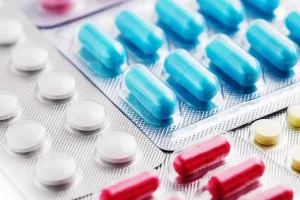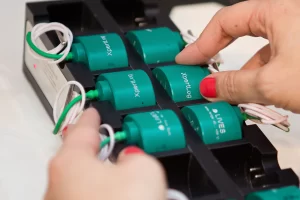If there is one aspect that is guaranteed to get wholesalers being audited by Competent Authorities deficiencies then it is the area of Bona Fides (BFs). More often than not, these deficiencies are classified as majors. Competent Authorities auditing GDP wholesalers will very often begin with examining the wholesalers Bona Fides, if mismanagement is observed here it leads to a bad starting point for the coming audit and may even be a major deficiency against you before anyone has reached breakfast.
These types of deficiencies are often classified as major because of the importance of protecting the supply chain from falsified medicinal products. A Responsible Person (RP) conducting the BFs in the correct manner is one of the most basic ways a company can demonstrate it is protecting against the entry of falsified medicinal products into the supply chain. If your supply chain involves procure and supply wholesalers, you must conduct the Bona Fides on both your financial and physical suppliers. So, what can an RP do to ensure this task is performed correctly. Well, this all depends on the supplier type.
Suppliers will mean one of two categories, a manufacturer holding a manufacturing import authorisation (MIA) or a wholesaler holding a wholesale distribution authorisation (WDA). It is imperative that in both cases the RP requests a copy of the original MIA or WDA from the supplier. This is to be done on the first occasion the manufacturer or wholesaler become a supplier and while it is not a legal obligation to obtain a copy of the original each year, it is best practice to do so. This will be explained further below. Once a copy of the original MIA or WDA has been obtained from the supplier this must be verified against something to ensure the information you have been provided with is legitimate. The verification is simply a comparison of the information present on the original authorisation against an independent source of the same information. This can be performed by verifying against one of two sources, the HPRA website or the EUDRA GMDP database. It is important to stress that the HPRA website in the case of wholesalers does not state what activities the WDA holder is permitted to conduct, as in procure, supply, hold or export. While in the case of MIA holders the HPRA website does not state the authorised manufacturing operations. With this in mind it is recommended to use the EUDRA GMDP database to verify supplier MIAs or WDAs. The EUDRA GMDP database (http://eudragmdp.ema.europa.eu/inspections/logonGeneralPublic.do) provides most, but not all the information that would be present on the copies of the original authorisations obtained from the suppliers. With the EUDRA GMDP copy in hand, you can verify the information present against the information provided in the copy of the original authorisation. The last check required is obtaining the suppliers GMP or GDP certificate. In Ireland currently, the HPRA do not provide a wholesaler with a GDP certificate or manufacturer with a GMP certificate. These certificates must be obtained by the RP from the EUDRA GMDP database. You have obtained all this documentation but why?
The reason you are obtaining the original WDA or MIA from the supplier is to have the original documentation to ensure they are authorised to conduct the transactions concerning your company. There are items listed on the copy of the original WDA or MIA that are not listed on the EUDRA GMDP database, such as controlled drugs or contract storage sites. For example, it is important that if you are financially purchasing medicinal product from a procure and supply wholesaler that you are physically receiving the medicinal product purchased from their listed contract storage site. This is important because the contract storage site is an outsourced activity and the financial supplier must have oversight of the activities that occur here, whereas if the medicinal product is coming from a storage site not listed on their authorisation, then what type of oversight does the supplier have here. From this original authorisation the wholesaler must check that the addresses they will receive medicinal product from are listed, the category of medicinal product to be supplied is listed and the activity the supplier is engaged in is listed, e.g. procure, supply, holding, export. There are understandable frustrations in that many authorisations do not contain information such as listing prescription only medicinal products, though the supplier is authorised to do so. What to do in these situations is elaborated on further below.
So, you have obtained copies of the original authorisations, why must you then verify this against the independent EUDRA GMDP database. This verification is designed to prevent any falsification of authorisations provided by suppliers. If the supplier knows the authorisation will be verified against an independent public source, then they will not doctor anything on the authorisation they provide you with. Lastly why have you obtained the GDP or GMP certificate of your supplier. These certificates demonstrate to you the customer that the supplier is deemed compliant with the relevant GMP or GDP legislation within its territory by its local Competent Authority.
If you are not legally obliged to obtain a copy of your suppliers MIA or WDA each year, then why should you? This is a good question. The reasoning is this, how will you know if your supplier has not changed something on their authorisation that will impact their legal authority to supply you. The EUDRA GMDP database is not the official source of the suppliers authorisations and should not be relied upon to inform you of any changes that may or may not have occurred to the suppliers authorisation, it is a public database that is used for verifying authorisation information, that is it and nothing more. It has been observed that some companies have obtained an original authorisation from their supplier when first setting up a supplier account 5 years previous or more and have never checked since if the original authorisation was still applicable to the activities being conducted today, which of course they weren’t. This is a guaranteed major deficiency during a Competent Authority audit and if your company also happens to wholesale controlled drugs then this requires a lot of explaining around protection of the supply chain and who can legitimately supply what. While controlled drugs are mentioned, it is important to note they bring an added requirement to the Bona Fides. You must obtain a copy of your suppliers controlled drug licence/registration every year to ensure they are permitted to supply the controlled drugs you are procuring from them.
Finally, we will elaborate on what to do if the category of medicinal product to be supplied is not listed on the authorisation. This is very often the case with the listing of prescription only medicinal products (POMS) on WDAs from other EU countries. These wholesalers in other EU countries by virtue of having a WDA are often automatically authorised to distribute POMS. No assumptions should be made when conducting the Bona Fides. Some EU competent authorities will list POMs within annex 1 of the WDA at a location titled “Any restrictions or clarifying remarks”. If POMs or any other category are not listed anywhere on the WDA, then the onus is on the RP to verify that the supplier is permitted to supply them. The main way this can be completed is to contact the suppliers local Competent Authority and get confirmation from them. All correspondence will need to be printed off, signed and dated. If not in English the correspondence must be independently translated. There are Competent Authorities within the EU that do not respond to these types of requests, this means you must go a different avenue. In cases like these do send a follow up email. If no response is received ensure you print off the correspondence you have sent, sign and date. They will be important for demonstrating the steps you did take to confirm the supplier was authorised to supply a specific medicinal product. In this case you must get confirmation from the suppliers’ RP in writing that they are authorised to supply this medicinal product type, you should also request any evidence they can provide you with which proves same. You must then risk assess using the information you have received. Ultimately if you are in doubt contact the HPRA for guidance, be sure in these communications you clearly outline the steps you have taken and outline what your own conclusions are.
Hopefully these paragraphs bring a little light to what can seem like an overly complicated aspect of being an RP, as shown above the requirements around authorising suppliers can be straight forward and easy to achieve.
References:
- HPRA Guide to Good Distribution Practice of Medicinal Products for Human Use IA-G0046.
- European Commission Guidelines on Good Distribution Practice of medicinal products for human use 2013/c 343/01
By Ruairí Doyle, GDP Manager and Compliance Lead







